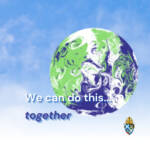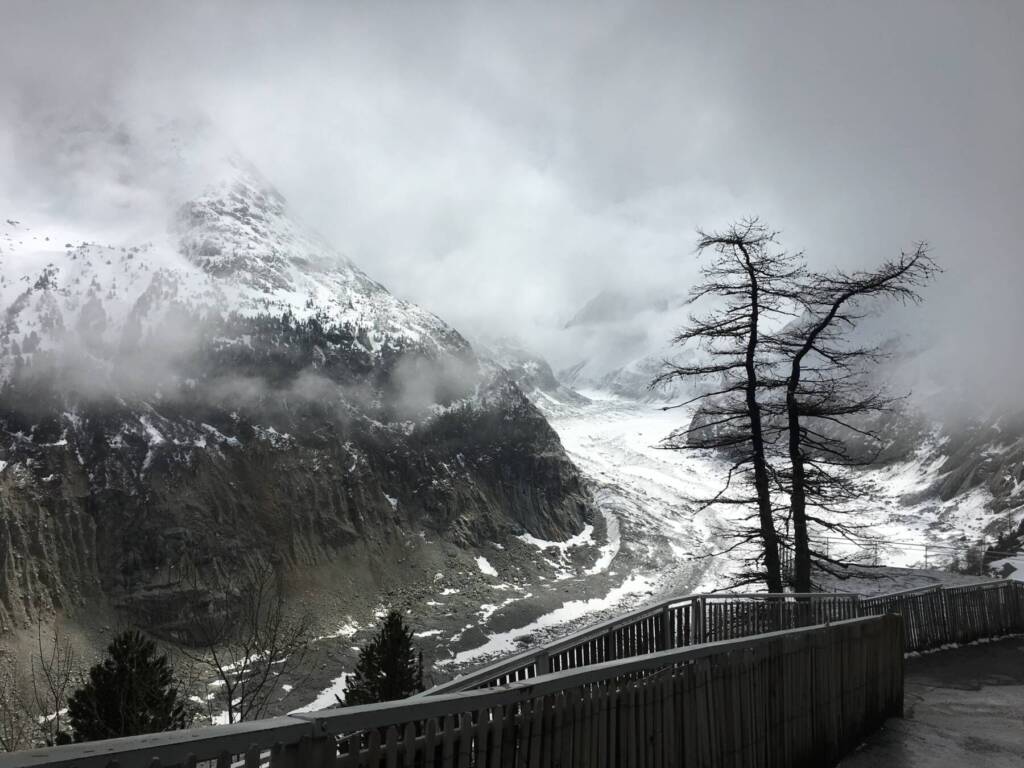 COP 26 Information and Reflection
COP 26 Information and Reflection
What’s next, post-COP 26?
See below for reflections and information related to COP26 which occurred in Glasgow over two week in November 2021.
Click here to return to the Climate Change Group page.
Update
Post-COP26 Update from the Scottish Episcopal Church Provincial Office
With COP26 over and Glasgow returning to normal after the influx of world leaders, politicians, campaigners and protesters, the environmental issues which dominated the headlines for three weeks have slipped down the news agenda.
Many people have asked ‘what next?’ after delegates agreed the ‘Glasgow Climate Pact’ at the end of the conference.
The Primus of the Scottish Episcopal Church, the Most Rev Mark Strange, was present in Glasgow throughout COP26, and attended the later stages of the conference.
Key events the Primus was involved in included participation in the Interfaith Scotland vigil, welcoming to Scotland the Anglican Communion delegation and the Most Rev Justin Welby, Archbishop of Canterbury, talks with the World Council of Churches delegation, joining 100,000 people on the Global Day for Climate Justice march through Glasgow, delivering the benediction at the Glasgow Cathedral ecumenical service, and meeting with the Papal Nuncio.
In this reflection for Inspires Online, the Primus says that the focus cannot be lost now that COP 26 is over, and that people of faith can be a voice of hope that it will be impossible to ignore.
“On the days following the final sessions of COP26 we heard from those saddened and angered at the lack of progress and from others who sense that matters progressed far enough for the necessary changes to remain possible,” writes the Primus. “Emphasis has been put on each nation bringing further plans to the table next year, and discussion is on-going on fossil fuels.
“Will these matters be stumbling blocks or are we looking at stepping stones? I haven’t got the answer to that because I don’t know the minds of those who attended, except to assume that in the end no-one wants the planet to die.
“What do I see as our response, the response of people of faith, the response of the Church? I believe we need to be a voice of hope, because we achieve nothing by burdening people with the impossibility of change. We are people of faith who understand that hope can come out of the most difficult and painful places. Our salvation was achieved through the pain of the cross.
“My first suggestion is that we continue to pray for the planet and for those who need to make the changes to save it. We need to pray with and for those who are most effected by climate change, who are often those with the least resources to cope with it and who have done least to create it. We need to offer these prayers continually, not once a year or at particular times, but always.
“We also need to encourage people to do what is achievable, not to frighten them with the enormity of the task we are facing, and enable people to feel that they are making a difference. We need to lead by example, changing what we need to change and by seeing that as a good, hopeful and joyful journey.
“Those who were invited to attend COP26 will have seen and heard from the large gathering of faith groups. They will know of our commitment to this world of ours, but we need to keep lobbying, reminding commerce and industry that they will only continue to flourish if they listen to our voices. They cannot keep ignoring the 80 per cent of the world’s population that has faith. If we stop and consider how we spend and what we spend it on, then we have a voice.”
Reflection on COP26
The Climate Crisis: Beyond Nations – COP26, 3 November 2021
with Interfaith Scotland
by Rev Bonnie Evans-Hills
Mer de Glace is just one of the glaciers in the European Alps. And of course the Alps is a mountain range which crosses those invisible borders we impose upon our landscapes. The glacier is reached by a railway, built in the Victorian era. When it was built, it finished at the top of a huge field of ice working its way slowly down a deep valley. The melt off from the glacier fed into the meadows throughout the Alps, providing fodder for cattle. From around the year 2000, the glacier starting melting fast, and now the railway ends at the top of an empty valley – empty because the soil, the sides of the valley, are too unstable to enable plants and trees to grow. So what was a valley full of ice, is now a desert, which a trickle of melt off, and the ice field is miles further up the valley. Nothing grows. Standing at the top of the valley, around every 5 minutes you can hear a loud, Crack! …followed by huge boulders and clumps of soil breaking away from the sides of the valley. You get a sense that the valley is screaming.
A few days after my visit to this mountain valley, I was taken on a tour of the industrial docks at Dunkirk. It’s a place that is not open to the public. Huge cranes, controlled by one person sitting in a box somewhere, remove the cargo from ships big enough to hold a city. Hills of coal and other materials line the docks. These will be used to make steel, or to fire oil refineries – the end product of which also lies in massive piles – plastic pellets. I was told that Dunkirk has one of the worse air qualities in Europe, and not a place you would want to bring up children. We went into the dockers café for lunch, and men came in covered in black dust – obviously breathing it in as they work. It’s a grim job. And these industries are much of the reason glaciers miles away are dying, and the plant and animal life they used to sustain are in drought. Can you imagine – the Alps in a drought?
Forty years ago, I lived in a country that had just had a revolution, working for an English-language newspaper. It was a time when there was such hope, to build a better nation. I did a piece of considerable research into environmental issues, particularly from a theological perspective. Our supervisor had attended an international conference on sustainable development with UNESCO, and handed me their latest information – outlining the various forms of alternative energy which were already being developed, in the way of wind and wave power, solar energy, and the different technologies that would sustain these. Forty years ago.
The point was made that we had the know how, what was needed was investment and for governments and industry to invest in them. But it was also acknowledged that there was much less profit in it for them, and that the investment would have to be considerable to begin with – even though it would pay for itself in the long run. And that was the problem – too little profit.
I wrote a series of three feature articles for the paper, but these were turned down and never published – why? Because the government at the time believed the environmental movement was part of a plot to prevent Third World countries from developing. This accusation has been repeated many times over ince, and hard questions need to be asked of ourselves – if Europe and the US really want poorer nations to follow environmental standards, then they must share technology. We have heard this repeated at COP26.
We now know that nature does not function in competition. We have misunderstood the terminology of ‘survival of the fittest’ – it is not about what plant or animal is stronger than others and overpowers them. It is rather about how well each is able to adapt to their environment, living alongside other life forms, and attuning themselves to their surroundings. The healthiest habitats are those with higher levels of diversity, where the variety of plants and animals are able to live in balance. Where there is a deficit in one, that is made up by others. Trees collaborate through minute root and fungi systems, sharing nutrients with one another, dependent upon seasons, the stronger sharing with the weaker – because with a change in season, what was once weak, becomes strong, and vice versa.
The command to love one another, to feed the hungry, house the homeless, clothe the naked, honour the older generation and protect the vulnerable, is part of religious teachings, and found throughout the Bible. The best among us is the servant of all. Is this not also the secret to our thriving, both as human beings, alongside one another – but also with the environment in which we live. What we have considered to be religious instruction, is also about our very survival. And not just us, but the whole of life around us.
The area where I now live has for several centuries been what I would call the engine room of Britain. Coal mining provided the fuel for industry. As mining died out, oil platforms were set up out in the Forth. Those are now defunct and the area has become a place where other platforms get towed in order to be taken apart. Wind turbines were being built, until Brexit meant contracts were lost and now even that has been shut down. It was an area where flax was grown, and woven into sails for the ships which took a colonial power abroad – where even more resources could be exploited. And yet this area where I live is an area of deprivation – never really benefitting from the resources it provided to the powerful.
But it is also an area where fishing has taken place for centuries. Old fishing songs tell of the ways of the wind and the tide, when to go out to sea, and when to stay home, when to allow the fish to breed, and when to go out for that one big catch.
Numerous indigenous cultures have lived close to the land, in tune with the earth and sea around them, knowing when to harvest and when to leave fallow for a rest. There is a Native American story I was told years ago. A young man sought out the old shaman, hoping to learn to become a shaman himself. The shaman told him there was a mother deer who leaves her fawn in the trees next to a meadow, when she goes out foraging. The young man was told to search out the fawn and to kill it. So he went in search of the fawn, waiting early in the morning and watching as the mother deer left her fawn in the trust of the forest. The young man watched the care with which she said good bye to her child and left. He watched the young deer as it lay there in innocence, and then went back to the shaman to confess he didn’t have the heart to kill the fawn. The shaman then told him that now he was ready – as long as he approached every plant he harvested for medicine with the same attitude of awe and sacredness as he has viewed the fawn. He would be taking a life.
Forty years, and really for much longer, we have had the knowledge about how to live more sustainably – and yet we have still not learned how to share, how to care, how to be kind – with one another, and with our world.
I’d like to share the words of one of my favourite authors, John O’Donoghue, who writes this in his book Benedictus:
There is a kindness that dwells deep down in things; it presides everywhere, often in the places we least expect. The world can be harsh and negative, but if we remain generous and patient, kindness inevitably reveals itself. Something deep in the human soul seems to depend on the presence of kindness; something instinctive in us expects it, and once we sense it we are able to trust and open ourselves.
While much of the solutions to our resource needs, particularly in the way of power, will to a certain extent continue to necessitate heavy industry, as we endeavour to search out more sustainable alternatives. But there is much, so much more, that each of us can do in our daily lives, in the way of mindset – of stopping consumption when we have enough, when we have what we need, of not being distracted by shinier cars or furniture or houses or bicycles or shoes or coffee pots. And of learning to share our resources, feeding those who are hungry, providing homes to those who are without – or running away from violent conflict or environmental disaster. Each and every one of us needs to learn to go slower, thinking carefully before action or speech – is what I am about to do kind? How will it affect others? It’s just not how we are used to behaving – even within our religious or belief systems, even those at times function in competition rather than cooperation.
The challenge for this COP26 is not just for political leaders or big business – it is for each and every one of us.
COP 26 Resources and Links
Prayer for COP26
Creator God, giver of life, you sustain the earth and direct
the nations. In this time of climate crisis, grant us clarity to
hear the groaning of creation and the cries of the poor.
Challenge us to change our lifestyles. Guide our leaders to
take courageous action. Enable your church to be a beacon
of hope. And foster within us a renewed vision of your
purposes for your world, through Jesus Christ our Lord,
by and for whom all things were made.
Amen
(Archbishop of York)



